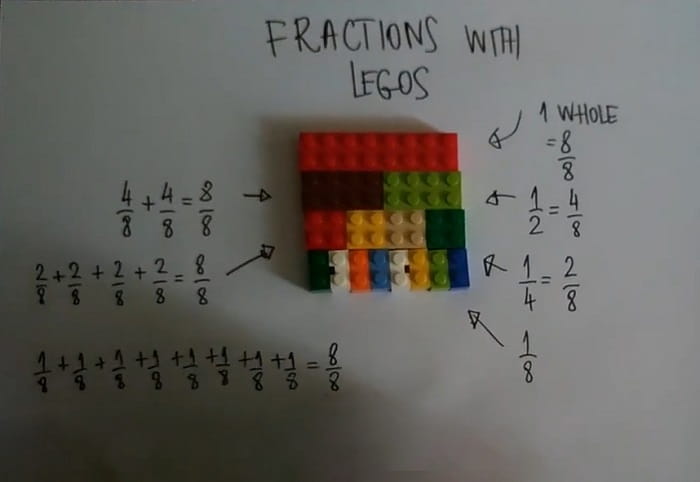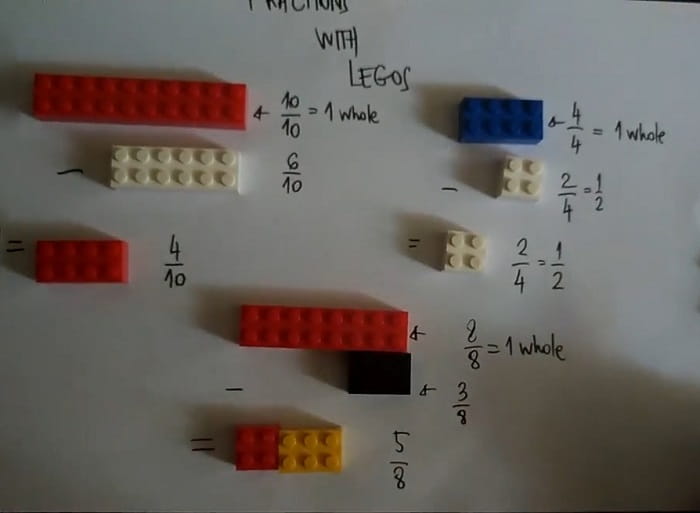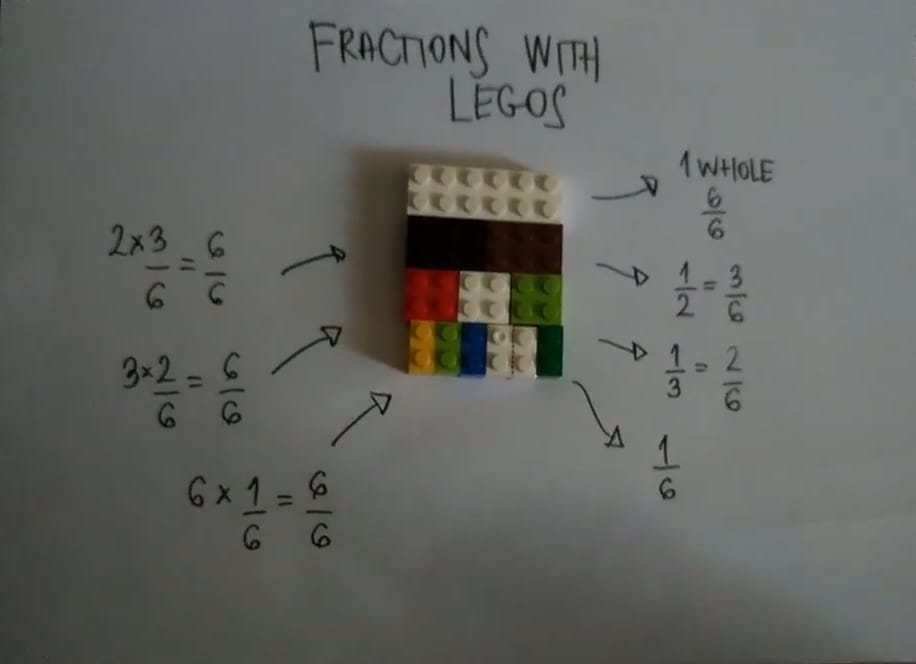Fractions are hard… Until you visualize them! Join us today and we will show you how to use the superpowers of LEGO to make everything more interesting. Even those pesky fractions!
Article Contents
1. What are Fractions in Mathematics?1.1. Proper and Improper Fractions
1.2. Like and Unlike Fractions
1.3. Mixed Numbers
2. Materials needed for fraction learning activity
3. Instructions for activity
3.1. Adding fractions
3.2. Subtracting fractions
3.3. Multiplying fractions
4. What will you learn and develop?
Let’s take a trip down memory lane. You are a third grader, sitting in your classroom. It’s a beautiful day outside, and all you would like to do is go play, but it’s math class so there will be no playing. Your teacher starts a lecture about fractions. He is writing numbers on the board, and you feel lost. She can tell you are not following and tries to explain it using more and more words, already a little annoyed. You feel like you will never be able to understand this and you don’t even see the point.
Don’t let your child feel that way! We don’t need to teach fractions through boring lectures. A much better way is through visualization tools. And what better tool than LEGO bricks! Children love them and you probably have tons of them somewhere under the bed. Learning through play is the best kind of learning!
What are Fractions in Mathematics?
A fraction is a number that tells us how many parts of a whole we have. We can recognize a fraction by the slash between the two numbers. For example, 3/6 is a fraction. In a fraction, we have a top number, the numerator, and a bottom number, the denominator. In our example, 3 would be the numerator and 6 would be the denominator.
We can try and explain a fraction using an example of pizza. If we picture a pizza, the bottom number tells us how many slices of pizza there is in total. The top number tells us how many slices we will take. So 3/6 tells us that the whole pizza contains 6 slices. We can take 3 of those 6 total slices. Now let’s eat those slices, all these explanations will make us all hungry.
Proper and Improper Fractions
We can differentiate fractions in a few different ways. First, is on “proper” and “improper” fractions.
If the numerator is less than the denominator, then we talk about proper fractions. For example, 3/6 is a proper fraction. If the numerator is greater than the denominator, we talk about improper fractions. For example, 6/3 is an improper fraction.
Let’s get to our example with pizza. With proper fraction, we can take all slices from one pizza. So we can take 3 slices from pizza that has 6 slices. But with improper fractions, one pizza is not enough to take all slices. If we want to take 6 slices from the pizza that has only 3 slices, we can’t do that. We need more than one pizza (2 pizzas with 3 slices in our example) to get all the slices.
Like and Unlike Fractions
Second, we have like and unlike fractions.
Fractions that are the same, we call like fractions. What does “the same” mean? Let’s take for an example 3/6 and 4/8. If we take 3 slices from pizza that has 6 slices, there will stay half of the pizza (3/6=0.5). And if we take 4 slices of pizza that has 8 slices, there will also stay half of the pizza (4/8=0.5). So that means like fractions – when the result of the two fractions is the same. If we go and try to simplify like fractions, we will get the same number. And that is how we can tell like from unlike fractions.
Unlike fractions are those that don’t give the same result. For example, 3/6 and 5/9 are unlike fractions because if we divide those two fractions, we won’t get the same result.
Mixed Numbers
And lastly, we have Mixed numbers or also called Mixed Fractions. We get mixed numbers when we transform improper fraction into the proper fraction. With that transformation, we also get a whole number in front of the proper fraction. For example, 7/3 is an improper fraction. We can write it as 2 ⅓. Now we have a whole number and a proper fraction.
On our pizza example, we can’t take 7 slices from pizza that only has 3 slices right? So we need 3 slices from 3 slices pizza + 3 slices from 3 slices pizza + 1 slice from 3 slices pizza. And that equals 2 whole pizzas + one slice of pizza with three slices. Or 2 ⅓.
Materials needed for fraction learning activity
- LEGO or any other cubes
Instructions for activity
For a video guide on How to learn Fractions in a fun way, you can watch the video at the beginning of the article. Or continue reading for step by step guide.
Adding fractions
Take one brick that will represent one whole (we chose one with a size of 8) and use it as a base. Pick any number of smaller bricks and see what part of the base they are. Combine them until you get to the length of the first one. You can do many different combinations (for example, combine 2 bricks of size 4: 4/8 + 4/ 8). Notice that 4/8 is the same as the half of the base brick. Try other combinations to express the same fractions!
Subtracting fractions
Take one brick that will represent one whole and use it as a base. Take another, smaller brick and compare its size to the size of the base. See how much empty space we have and what brick you could put there. Notice the size of that brick. That is your answer!
Multiplying fractions
This is like adding, but now we will group our fractions. Take one brick that will represent one whole (we chose one with a size of 6) and use it as a base. Pick any number of smaller bricks and see what part of the base they are. Combine them until you get to the length of the first one. See how many different groups you need. You can do many different combinations (for example, combine 2 bricks of size 3: 2*3/6).
What will you learn and develop?
- FRACTIONS! Also, other mathematical operations
- Creative problem-solving
- That math is fun! 😉
We hope you enjoyed reading/watching this activity. And that it will be helpful in future (fun) learning. If you’re interested in some similar activities, find out all about mysterious number Pi. If you want more learning activities, check out 7 fun Activities to Learn Letters and Numbers.
If you’re searching for some great STEM Activities for Kids and Child development tips, you’re in the right place! Check the Categories below to find the right activity for you.

STEM Science
Videos, guides and explanations about STEM Science in a step-by-step way with materials you probably already have at your home. Find new Science ideas.
Read more
STEM Technology
Videos, guides and explanations about STEM Technology in a step-by-step way with materials you probably already have at your home. Find new Technology ideas.
Read more
STEM Engineering
Videos, guides and explanations about STEM Engineering in a step-by-step way with materials you probably already have at your home. New Engineering ideas!
Read more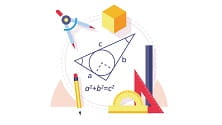
STEM Math
Videos, guides and explanations about STEM Math in a step-by-step way with materials you probably already have at your home. Find new Mathematics ideas.
Read more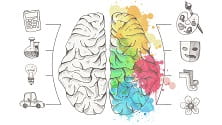
Psychology
Find out all about development psychology topics that you always wanted to know. Here are articles from child psychology and development psychology overall.
Read more
First year of Child’s Life
Following a Child’s development every month from its birth. Personal experiences and tips on how to cope with challenges that you will face in parenting.
Read more
